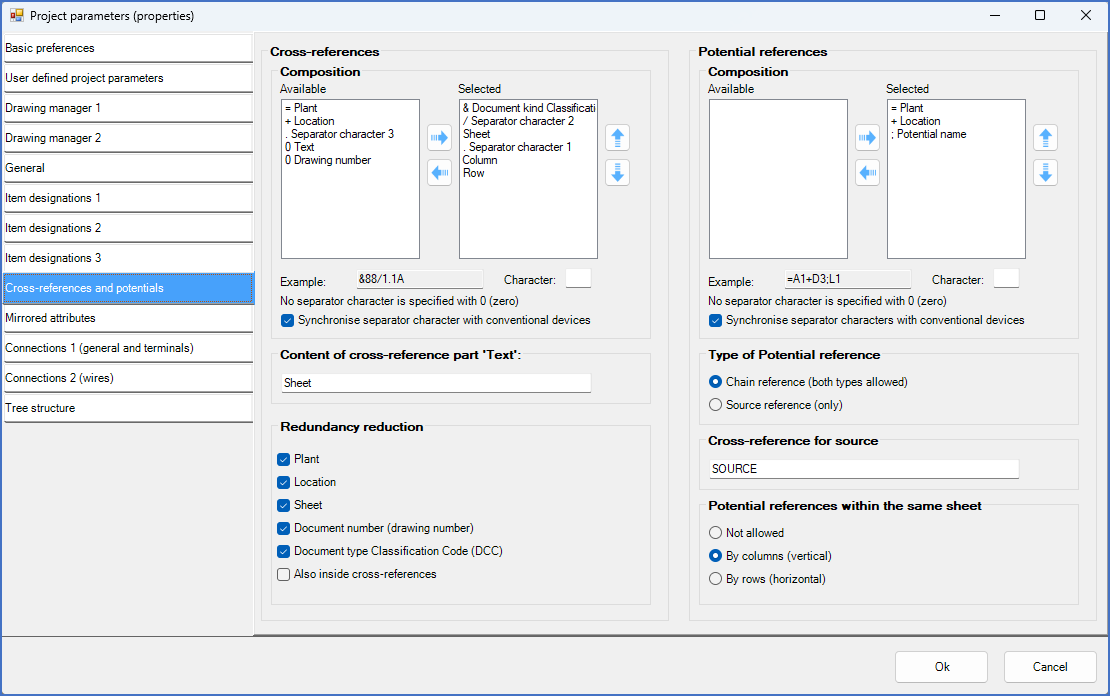|
<< Click to Display Table of Contents >> Cross-references |
  
|
|
<< Click to Display Table of Contents >> Cross-references |
  
|
Both IEC1355 implementations utilise sheet-numbering individual for each document code. That makes it necessary to include the document code in the cross-references, since they would otherwise be ambiguous. On the other hand, having a document code present in all cross-references everywhere would not be optimal, since most references would still be within the same type of document, like circuit diagrams. In cases like that, we can do without the document code and thereby increase the readability of the documentation.
To accomplish this, a so-called “redundancy reduction” is used. That means that the document code is included only when referring to other document codes, not within one and the same.

Figure 506: Please note that Document kind Classification Code (DCC) is included in the cross-reference composition and that redundancy reduction is active for that part.
The cross-reference composition is made up of six parts:
1.The Document kind Classification Code (DCC)
2.A separator character consisting of a slash (“/”)
3.The sheet number
4.Yet another separator character, this one consisting of a dot (“.”)
5.The column
6.The row
For both Sheet and Document Class Code (DCC), redundancy reduction is active.